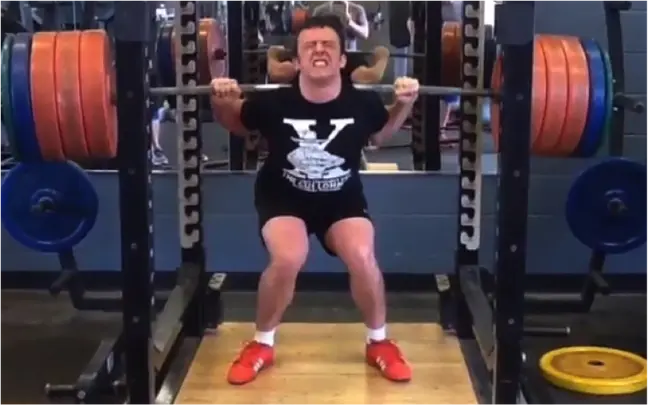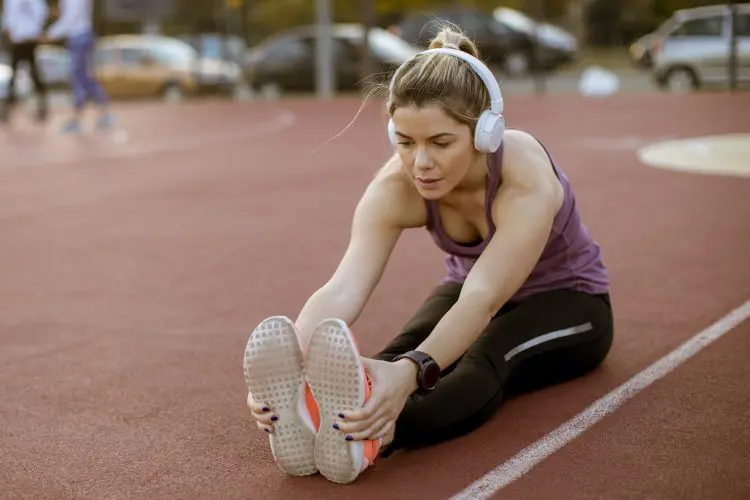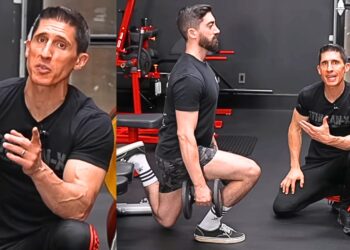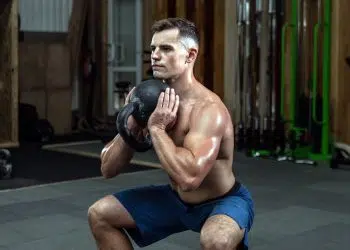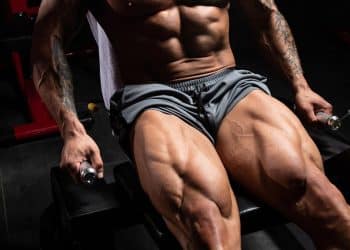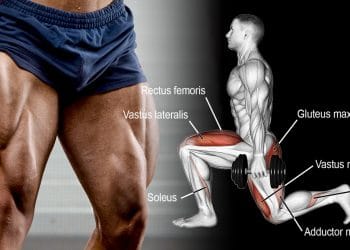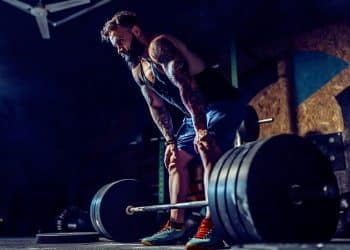Squats are often called the king of exercises, and that’s a title they deserve! According to research found on PubMed, squats have wide-reaching benefits, including building muscle and strength and improving body composition and cardiovascular fitness (1, 2).
Entire workouts have been built around squats, including the old-school 20-rep squat program and the Smolov squat program.
Most athletes squat, and they’re one of the best exercises for increasing athletic performance. Squats can help you run faster, kick harder, and jump higher (3). They’re also one of the most functional exercises, as they closely replicate many of the activities of daily living.
There are lots of different squatting exercises to choose from, including:
- Front squats
- Back squats
- Overhead squats
- Zercher squats
- Goblet squats
- Box squats
- Smith machine squats
Squats are generally a fairly safe exercise. However, as a personal trainer with over 30 years of experience and a former powerlifter, I also know that badly performed squats can be very dangerous. Done incorrectly, all squat variations can lead to severe back or knee injuries.
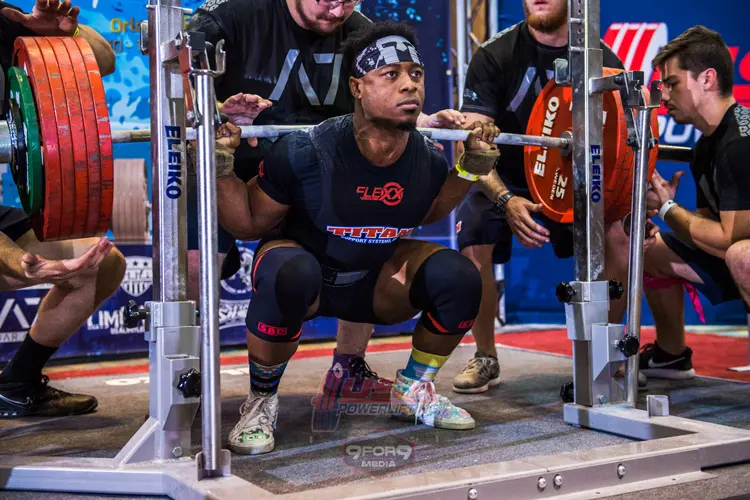
Whether you are a powerlifter, a bodybuilder, or just a recreational lifter who wants to squat better and more safely, use the information in this article to fix the six most common squat mistakes.
Level Up Your Fitness: Join our 💪 strong community in Fitness Volt Newsletter. Get daily inspiration, expert-backed workouts, nutrition tips, the latest in strength sports, and the support you need to reach your goals. Subscribe for free!
Most Common Squat Mistakes and How to Fix Them
A poorly performed squat will make your workouts less productive, cause injury, and reduce the amount of weight you can lift. Analyze your squat for faults and then use these fixes to get back on track.
1. Holding The Bar Across Your Neck
Barbell back squats are probably the most widely used version of this lower-body compound exercise. They allow you to lift more weight than other types of squat movements. For most lifters, they are also the most comfortable squat variation.
That said, a lot of lifters find that back squats hurt their neck. This problem is invariably caused by resting and holding the bar too high.
There is no natural padding on your neck, so it goes without saying that resting a heavy barbell on your neck is going to hurt! Some lifters use a squat pad to alleviate this problem, but that only addresses the symptom and not the cause of this vault.
Eliminating this problem invariably means resting the bar a little lower. This can take some getting used to and requires good shoulder mobility. However, once you master this technique, you’ll be able to squat heavy weights in relative comfort.
Solution:
The bar should not rest on your neck but on your upper back instead. Specifically, it should be on or below your upper traps. This will provide you with some natural cushioning, making back squats a whole lot more comfortable. Beefing up your traps may also help. It’s no coincidence that most expert squatters also have well-developed traps.!
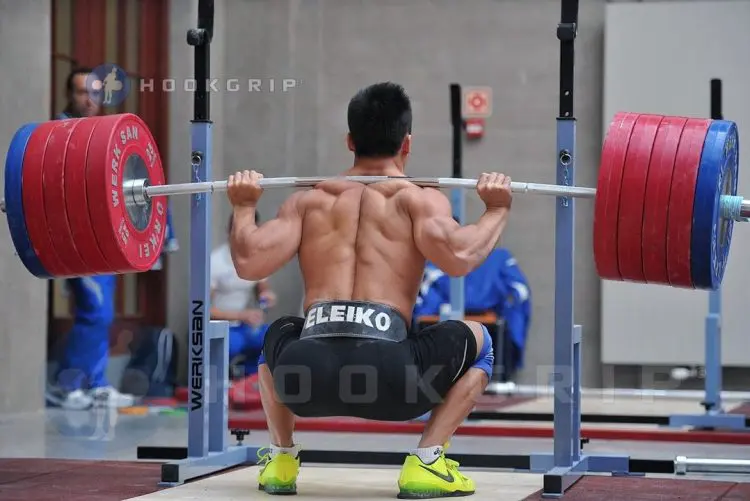
2. Your Knees Cave In
Knee joint stability is crucial for safe, efficient squatting. If your knees cave in, you are not only wasting energy but also putting more strain on your joints. Your knees should bend and flex during squats (obviously!), but there should be no lateral movement.
There are a few reasons that your knees may cave in when you squat:
- Weak hip abductors
- Unsupportive shoes
- Weak foot arches
Solutions:
The abductors are the muscles on the outside of your hips and thighs, including gluteus minimus and medius, and tensor fascia latae. Stronger adductors will help prevent your knees from caving in during squats. Strengthen these muscles with booty band squats and banded side steps.
Next, make sure your workout shoes provide you with plenty of arch support. Avoid squatting heavy weights in cushioned running shoes. Even if they have decent arch support, they will still collapse under hefty weights. Weightlifting shoes are arguably the best shoes for most types of squats, but hard-soled athletic shoes with a good arch will also suffice.
Finally, if your knees continue to roll inward, the arches of your feet may be the issue. After all, if you pronate when you walk or run, you may do it when you lift, too. Take a look at the soles of your shoes. If they are more worn along the inside of your shoe, you are probably an over-pronator.
One possible fix for this is strengthening your arches. Sit on a chair and place your bare feet on a towel. Scrunch the towel up by gripping it with your toes. This might not be the most exciting exercise, but it could significantly improve your squat.
3. You Round Your Lower Back
Rounding your lumbar spine puts a lot of stress on your intervertebral ligaments and disks, which can cause serious and even permanent injury. As I often tell my army of personal training clients, a rounded lower back is a weak lower back, so fixing this fault is critical if you want to avoid injuries during squats.

There are several factors that can result in rounding your lower back during squats, including:
- Tight hamstrings
- Weak core
- Squatting too deep
Solutions:
Tight hamstrings pull the bottom of your pelvis forward, causing your lower back to round. Stretching and foam rolling are the best solutions for overtight hamstrings, so get into the habit of stretching your hamstrings before squatting. Stretch your hamstrings several times a day if they’re chronically tight.
Related: The 7 Best Hamstring Stretches for a Healthier Lower Back and Knees
A strong core is critical for keeping your lower back slightly arched. The core is the collective term for your midsection muscles and includes the rectus abdominus, obliques, transverse abdominus, pelvic floor, diaphragm, and erector spinae. These muscles work together to stabilize your lumbar spine to prevent it from moving while you squat.
Level Up Your Fitness: Join our 💪 strong community in Fitness Volt Newsletter. Get daily inspiration, expert-backed workouts, nutrition tips, the latest in strength sports, and the support you need to reach your goals. Subscribe for free!
Wearing a weightlifting belt can help, but you still need stronger core muscles to stop your lower back from rounding. Increase core strength with exercises like rollouts, glute-ham raises, and back extensions.
Finally, squatting too deep can cause some lifters to round their back. A lot of so-called training experts say that you should squat “ass to grass,” and anything less is cheating or pointless.
The reality is that many factors affect how deep you can safely squat, and descending too far could lead to injury. Don’t feel pressured to squat below parallel if you aren’t ready or built to do so. Squat as deep as your flexibility allows, and don’t force yourself to go deeper if it causes your lower back to round.
Learn how to determine your optimal squat depth and the steps that may help you squat deeper in this in-depth guide.
Related: Understanding and Preventing Lower Back Pain from Squats:
4. Your Hips Rise Faster Than Your Shoulders
When you squat, your hips and shoulders should move at the same speed. If your hips rise faster than your shoulders, you risk putting more stress than necessary on your lower back.
Also, if your hips come up and the weight lags behind, you turn what should be a quad-dominant exercise into more of a hip movement, essentially doing something akin to a good morning. The most likely cause of this fault is weak hamstrings, glutes, and erector spinae.
Solution:
The best way to fix this problem is to beef up your posterior chain with exercises like Romanian deadlifts, rack pulls, glute-ham raises, leg curls, and the already mentioned good mornings. Doing a dedicated posterior chain workout per week is a very effective way to get your glutes, hamstrings, and lower back strong enough to squat safely.
5. Your Heels Lift During Squats
Heel lifting is a common squatting error. If your heels lift, your weight will shift forward onto the balls of your feet. The most likely cause of this problem is tight calf muscles. This weight shift has a number of effects, including:
- Loss of balance and power
- More stress on your knee joints
- The weight moves forward away from your base of support
- Increased stress on your lower back
- Hips are more likely to rise faster than your shoulders
- Increased tendency to round your lower back
Solutions:
In the short term, you can prevent your heels from lifting by squatting with your heels raised on small blocks or plates. However, be aware that this only fixes the symptom of tight calves, not the issue itself.
Improve calf flexibility by standing on the edge of a step and allowing your heels to drop below the level of your toes. Do this with straight and bent knees to stretch the gastrocnemius and the smaller soleus calf muscle. Do this daily, holding for 30-60 seconds each time. Also, stretch your calves before squatting to make keeping your heels down a little easier.
Related: 7 Best Gastrocnemius Stretches for Tight Calves
6. You’re Sitting Too Far Back
A good squat starts with a hip break, meaning that the hips bend before the knees. Unfortunately, many squatters exaggerate this technique and end up pushing their hips too far back, bending their knees much later than they should.
While the hips SHOULD break first, the knees should bend almost immediately afterward. There is no need to push your butt so far back that your upper body ends up practically parallel to the floor. Doing so turns what should be a knee-dominant exercise into a hip-dominant one. Sitting back too far takes stress off your quads and means you end up doing a weird deadlift/squat hybrid.
The difference between your hips and knees bending should be almost imperceptible; you should be able to feel it, but it shouldn’t be overtly obvious to anyone watching.
Solution:
Video yourself squatting and compare the movement of your hips to your knees. While it’s okay to lead with your hips, they should only move slightly before your knees. Count in your head, “one and two,” with your hips moving on the one and your knees on the two, i.e., just half a beat behind.
Finally, if you do box squats, make sure the box is only just behind you so you don’t have to sit too far back to reach it.
Wrapping Up
While squats undoubtedly deserve the title of King of Exercises, that’s only really true if you do them correctly. Improperly performed squats are much less effective and also more likely to cause injuries. The heavier you squat, the more likely it is that poor squatting technique will hurt you.
While it may take some time and analysis to determine the cause of your squatting faults, the solutions are usually easy to implement. In most cases, all you’ll need to do is add a few specialized exercises to your accessory training program and squat more mindfully.
Fixing your squat may mean taking a few steps back and working out with lighter weights for a few weeks. However, your efforts WILL be rewarded, and you’ll soon blast past your old personal records.
Say NO to ugly, ineffective squats. Fix your squat to unlock your real strength and muscle size potential.
References
1 – Rossi FE, Schoenfeld BJ, Ocetnik S, Young J, Vigotsky A, Contreras B, Krieger JW, Miller MG, Cholewa J. Strength, body composition, and functional outcomes in the squat versus leg press exercises. J Sports Med Phys Fitness. 2018 Mar;58(3):263-270. doi: 10.23736/S0022-4707.16.06698-6. Epub 2016 Oct 13. PMID: 27735888.
2 – Jeon YK, Shin MJ, Kim CM, Lee BJ, Kim SH, Chae DS, Park JH, So YS, Park H, Lee CH, Kim BC, Chang JH, Shin YB, Kim IJ. Effect of Squat Exercises on Lung Function in Elderly Women with Sarcopenia. J Clin Med. 2018 Jul 5;7(7):167. doi: 10.3390/jcm7070167. PMID: 29976889; PMCID: PMC6068941.
3 – Pallarés JG, Cava AM, Courel-Ibáñez J, González-Badillo JJ, Morán-Navarro R. Full squat produces greater neuromuscular and functional adaptations and lower pain than partial squats after prolonged resistance training. Eur J Sport Sci. 2020 Feb;20(1):115-124. doi: 10.1080/17461391.2019.1612952. Epub 2019 May 15. PMID: 31092132.

